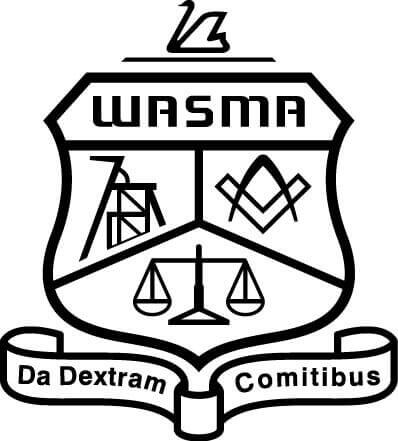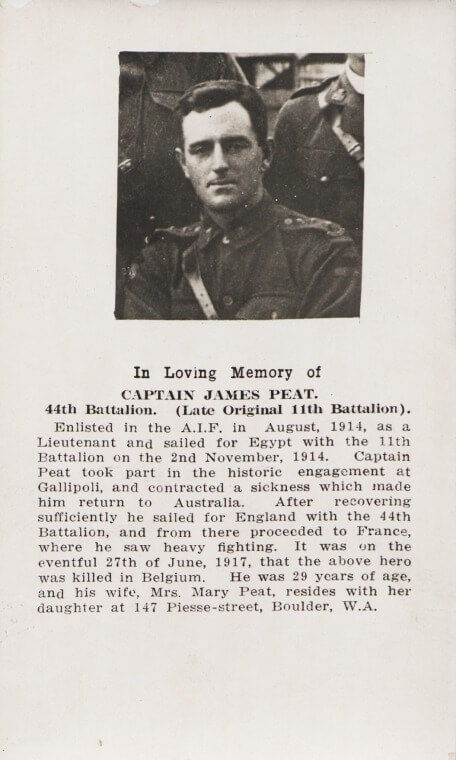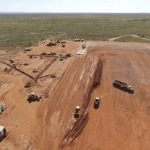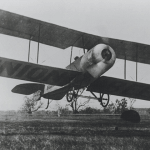Today marks the death of Captain James Peat 100 years ago during World War I. The following was written by Curtin University archivist Elizabeth McKenzie in relation to Capt. Peat’s life Captain James Peat was born in
Melbourne on February 27, 1887, and was a mining engineer and the first surveying graduate from the Western Australian School of Mines in Kalgoorlie. While working in a bank, he studied part-time to get his mine
surveyor’s certificate and went on to become chief surveyor of the Ivanhoe Gold Mine. Capt. Peat’s original medals and papers are on display at the Western Australian School of Mines building in Kalgoorlie-Boulder.
An honour board paying tribute to Capt. Peat has been fully refurbished and re-mounted in the main corridor of the Egan Street access to the campus in Building 701. Capt. Peat was a member of the army reserves, known as the
Goldfields Regiment of the Citizens Military Force, when war broke out. He signed up for the Australian Imperial Force in the rank of Lieutenant and sailed for Egypt in 1914 with the 11th Battalion.
Suffering from measles, he returned home in 1915 to recover before once again heading over- seas to battle, where he was posted to France and Belgium with the 44th battalion.
Despite further health setbacks, he remained in Europe with a tour of duty on the Western Front.
James was a keen writer and, like many soldiers, kept a diary of his letters and thoughts.
His letters describe many aspects of his time at war including thoughts about fellow soldiers who lost their lives, his own health, military tactics of the day, the training received and many musings about the enemy.
His writings describe phosgene gas attacks, barrages of shelling, the weather — snow was a novelty — and the misery of war. During time spent in England he wrote about zeppelin raids, women filling the jobs of men and the great honour of when his battalion was presented to the King. His diary also contains snippets of small pleasures about what made a good billet, having a shower and getting clean, letters from home, admiring the local architec-
ture, about getting his men settled into billets or tents whenever they arrived, keeping note of where they all were, and money not going as far as he would like.
His last entry was around June 21, 1917. Capt. Peat was killed in action by sniper fire on June 27, 1917 at the age of 29. He was buried at Westhof Farm cemetery. He left behind a widow, Mary,and a daughter, Joan

The history of the Western Australian School of Mines Alumni (WASMA) reflects the ups and downs of the Western Australian School of Mines (WASM) and the role it has played in supporting graduates in a range of activities and events. It also describes the important role that graduates have played in ensuring WASM remains in Kalgoorlie. Learn more.





